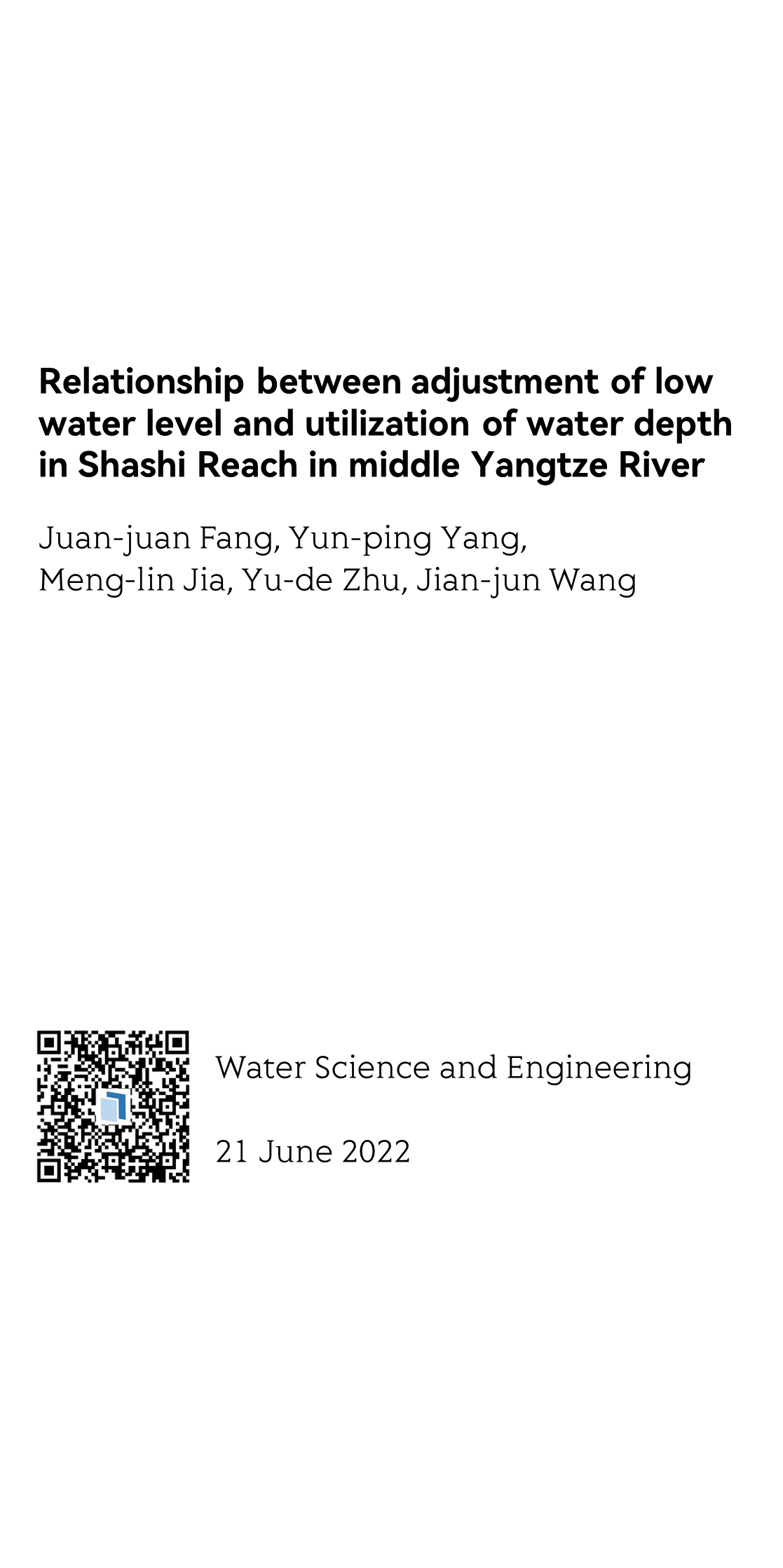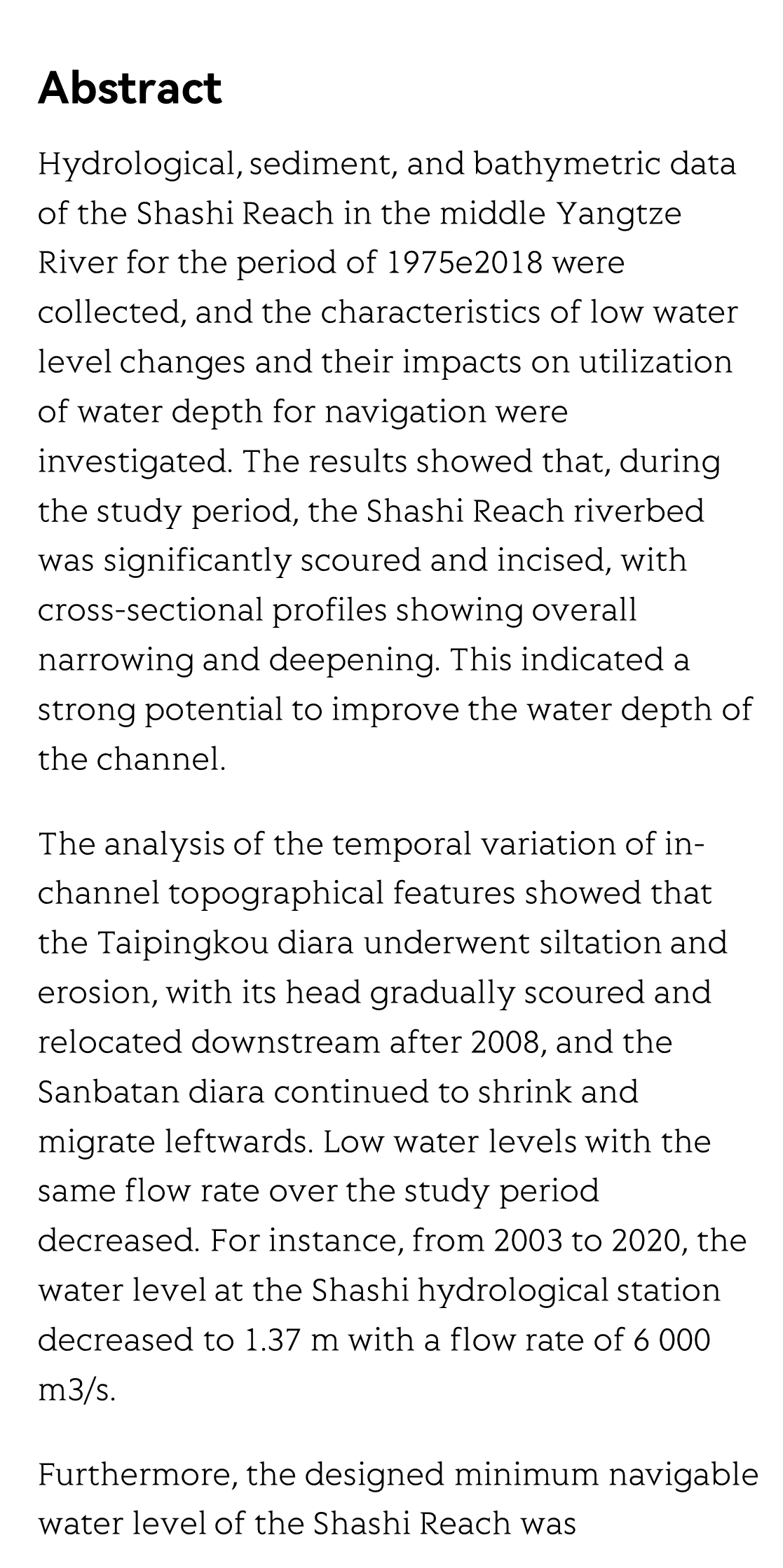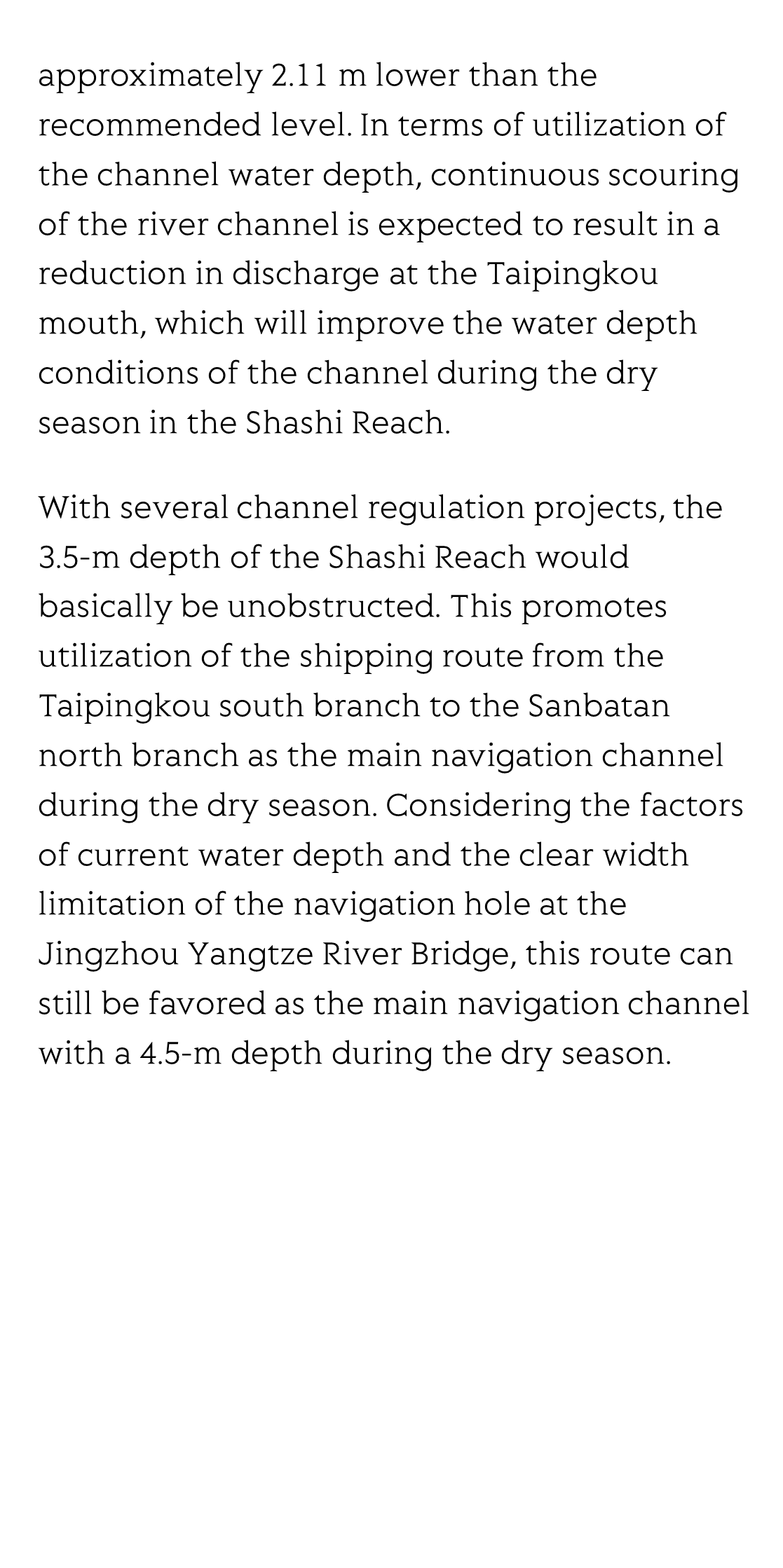(Peer-Reviewed) Relationship between adjustment of low water level and utilization of water depth in Shashi Reach in middle Yangtze River
Juan-juan Fang 方娟娟 ¹, Yun-ping Yang 杨云平 ² ³, Meng-lin Jia 贾梦琳 ³, Yu-de Zhu 朱玉德 ², Jian-jun Wang 王建军 ²
¹ State Key Laboratory of Water Resources and Hydropower Engineering Science, Wuhan University, Wuhan 430072, China
中国 武汉 武汉大学 水资源与水电工程科学国家重点实验室
² Tianjin Research Institute for Water Transport Engineering, Ministry of Transport, Tianjin 300456, China
中国 天津 交通运输部 天津水运工程科学研究院
³ State Key Laboratory of Hydrology-Water Resources and Hydraulic Engineering, Hohai University, Nanjing 210098, China
中国 南京 河海大学水文水资源与水利工程科学国家重点实验室
Abstract
Hydrological, sediment, and bathymetric data of the Shashi Reach in the middle Yangtze River for the period of 1975e2018 were collected, and the characteristics of low water level changes and their impacts on utilization of water depth for navigation were investigated. The results showed that, during the study period, the Shashi Reach riverbed was significantly scoured and incised, with cross-sectional profiles showing overall narrowing and deepening. This indicated a strong potential to improve the water depth of the channel.
The analysis of the temporal variation of in-channel topographical features showed that the Taipingkou diara underwent siltation and erosion, with its head gradually scoured and relocated downstream after 2008, and the Sanbatan diara continued to shrink and migrate leftwards. Low water levels with the same flow rate over the study period decreased. For instance, from 2003 to 2020, the water level at the Shashi hydrological station decreased to 1.37 m with a flow rate of 6 000 m3/s.
Furthermore, the designed minimum navigable water level of the Shashi Reach was approximately 2.11 m lower than the recommended level. In terms of utilization of the channel water depth, continuous scouring of the river channel is expected to result in a reduction in discharge at the Taipingkou mouth, which will improve the water depth conditions of the channel during the dry season in the Shashi Reach.
With several channel regulation projects, the 3.5-m depth of the Shashi Reach would basically be unobstructed. This promotes utilization of the shipping route from the Taipingkou south branch to the Sanbatan north branch as the main navigation channel during the dry season. Considering the factors of current water depth and the clear width limitation of the navigation hole at the Jingzhou Yangtze River Bridge, this route can still be favored as the main navigation channel with a 4.5-m depth during the dry season.
Embedded solar adaptive optics telescope: achieving compact integration for high-efficiency solar observations
Naiting Gu, Hao Chen, Ao Tang, Xinlong Fan, Carlos Quintero Noda, Yawei Xiao, Libo Zhong, Xiaosong Wu, Zhenyu Zhang, Yanrong Yang, Zao Yi, Xiaohu Wu, Linhai Huang, Changhui Rao
Opto-Electronic Advances
2025-05-27
Wearable photonic smart wristband for cardiorespiratory function assessment and biometric identification
Wenbo Li, Yukun Long, Yingyin Yan, Kun Xiao, Zhuo Wang, Di Zheng, Arnaldo Leal-Junior, Santosh Kumar, Beatriz Ortega, Carlos Marques, Xiaoli Li, Rui Min
Opto-Electronic Advances
2025-05-27
Integrated photonic polarizers with 2D reduced graphene oxide
Junkai Hu, Jiayang Wu, Di Jin, Wenbo Liu, Yuning Zhang, Yunyi Yang, Linnan Jia, Yijun Wang, Duan Huang, Baohua Jia, David J. Moss
Opto-Electronic Science
2025-05-22
Structural color: an emerging nanophotonic strategy for multicolor and functionalized applications
Wenhao Wang, Long Wang, Qianqian Fu, Wang Zhang, Liuying Wang, Gu Liu, Youju Huang, Jie Huang, Haoyuan Zhang, Fuqiang Guo, Xiaohu Wu
Opto-Electronic Science
2025-04-25







